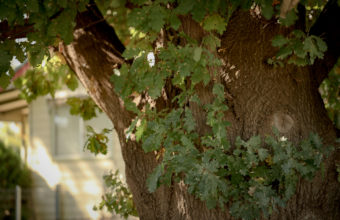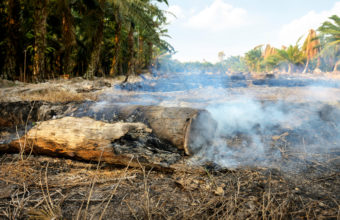Cutting tree branches in summer is generally not recommended, especially for significant pruning tasks, due to several reasons related to the health and stress of the tree. There are circumstances when summer pruning is acceptable or even beneficial.
Here’s a closer look at the considerations…
Reasons to Avoid Summer Pruning
- Stress on Trees – Trees are actively growing in the summer, and removing branches can stress them by reducing their ability to photosynthesize, especially if a large portion of the leaf-bearing branches are removed.
- Disease and Pest Exposure – Pruning cuts can expose trees to pests and diseases that are more active during the summer months. Some diseases spread more readily when temperatures are warmer and can infect trees through the fresh cuts.
- Water Loss – Pruning in summer can lead to increased water loss from the tree, as the leaf surface area, which helps regulate transpiration and water retention, is reduced. During hot and dry periods, this can further stress the tree.
When Summer Pruning Is Acceptable
- Dead, Diseased, or Damaged Limbs – Removing limbs that are dead, diseased, or damaged can be done at any time of the year, including summer. This is important for the health of the tree and the safety of the surrounding area.
- Light Pruning – Light pruning to shape the tree or to remove a few small branches is usually okay in the summer, as long as it doesn’t involve removing a significant portion of the tree’s canopy.
- Specific Tree Types – Some tree species may tolerate or even benefit from summer pruning better than others. Research or consult with an arborist about the specific needs of your tree species.
- Hazard Reduction – If a branch poses an immediate risk to safety, such as being at risk of falling on a house, vehicle, or pedestrian area, it should be removed regardless of the season.
Best Practices for Summer Pruning
- Consult an Expert – If unsure, it’s always best to consult with a certified arborist before performing any significant pruning. They can provide advice tailored to your tree’s species, size, and health.
- Use Proper Techniques – Ensure that you’re using proper pruning techniques to minimize damage and promote quick healing. This includes making clean cuts in the right places and avoiding tearing or stripping bark.
- Hydrate the Tree – Make sure the tree is well-watered, especially before and after pruning during the summer months, to help mitigate stress.
Conclusion
While it’s generally better to wait for late fall or winter to do extensive pruning when trees are dormant, there are situations where summer pruning is necessary or even beneficial. Always prioritize the health and safety of the tree, and when in doubt, seek professional guidance.






